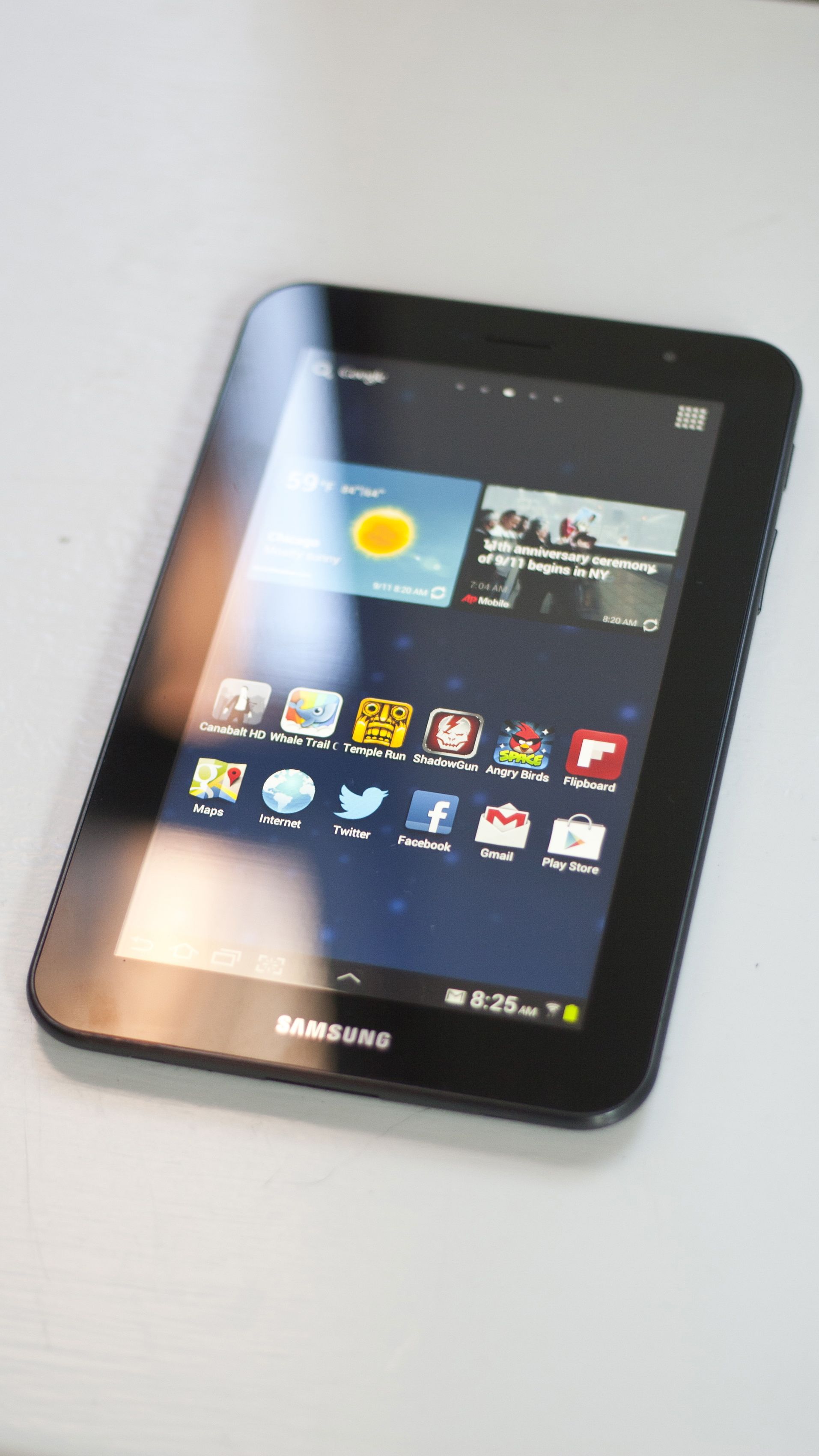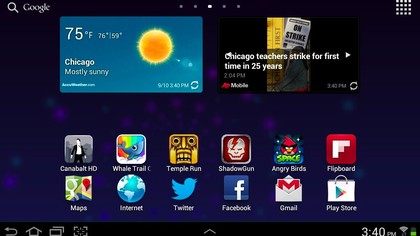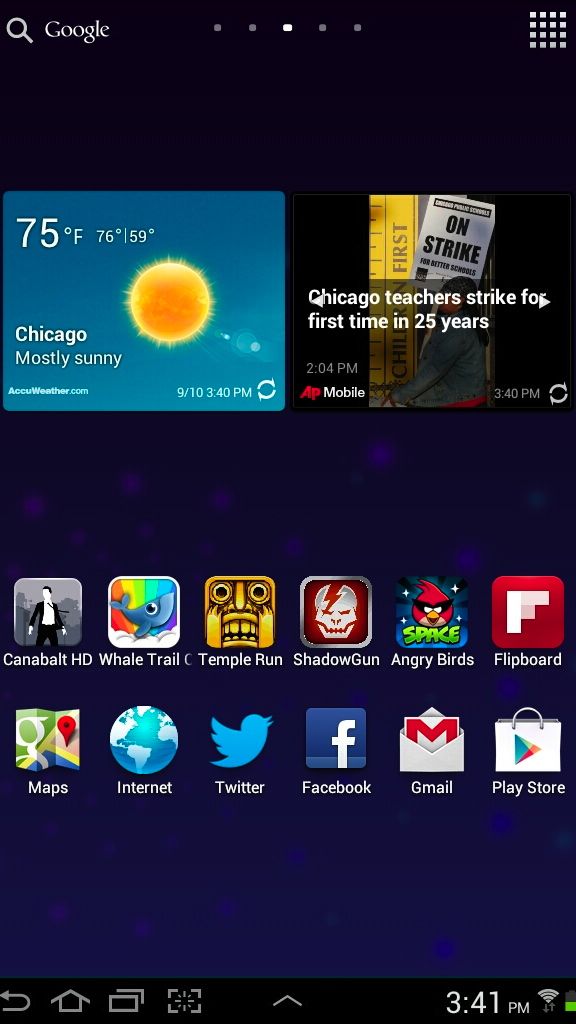Why you can trust TechRadar
The Galaxy Tab 7.0 Plus features a 1024x600 display, which at those dimensions puts the PPI (pixels per inch) at just 170 – which makes for a solid image essentially on par with the Galaxy Tab 2 7.0 and standard Kindle Fire model.
It's not nearly crisp enough to hide its pixels, though, and you'll see some oddly jagged app icons or blurry images along the way. The fuzzy background images included for the lock screen are an uninviting head-scratcher, to say the least.

Were it not for the Nexus 7 spoiling us with its 1280x800 (216 ppi) display, which the coming Kindle Fire HD matches, we'd consider it just fine for an affordable seven-incher. But by this point, it falls a little short considering the similar price points and feature sets.
While a fair TFT display for everyday use, much like its successor (the Galaxy Tab 2 7.0), the screen lacks pop for things like movies and games. Again, the Nexus 7 shows it up in that regard, as do ritzier tablets like the iPad, but it's a muted effect well worth noting for those who intend to use the Plus for heavy video viewing.
Unfortunately, as with the Galaxy Tab 2 7.0, the Galaxy Tab 7.0 Plus also suffers from some odd responsiveness issues, with small icons requiring multiple taps at times to register. It wasn't particularly clear why some buttons or selections didn't respond, and while the issue didn't sink the overall experience, it's an unfortunate slight.
Interface
Thanks to an update issued just days ago for the Wi-Fi version, the Galaxy Tab 7.0 Plus now runs Android 4.0: Ice Cream Sandwich, which delivers a slicker-looking interface whether you use the tablet in portrait or landscape orientation. As is the case with other Samsung devices, ICS is overlaid with its own TouchWiz skin.

At the bottom of the screen, you'll find a permanent control bar that includes virtual back and home buttons, as well as an icon that brings up a list of open apps, which can be closed with a swipe to the right. A handy screenshot button is also shown, while an upwards arrow delivers easy (and customizable) access to core apps like Alarm, Calculator, and the Task Manager.
Meanwhile, tapping the lower right part of the screen (with the clock, Wi-Fi, and battery indicators) brings up the notifications box, which includes quick controls for turning on/off Wi-Fi, GPS, and screen rotation lock, among other features, plus you can access the brightness setting on the fly and tap into the full Settings menu.
Seemingly due to the option for both portrait or landscape use, TouchWiz only gives you the middle of the home screen to use for widgets and apps, leaving wasted empty space on the top and bottom when upright, or left and right when sideways. It's a drag to not have that extra space to really trick out your screens as desired, especially compared to the portrait-only Nexus 7, which has its awesome media collage (but runs Android 4.1: Jelly Bean).

We started using the 7.0 Plus with Android 3.0: Honeycomb installed, and initially found the menus quite sluggish – a classic Android complaint, especially for nearly year-old hardware. But the upgrade to Ice Cream Sandwich really smoothed over the laggy movements between home screens and menus, making it feel almost like a brand new tablet.
It's really a huge difference, but considering how long it took for Ice Cream Sandwich to get on the Galaxy Tab 7.0 Plus, as well as the fact that it's not one of Samsung's more recent devices, we're not holding our breath for an appearance by Jelly Bean on the device. At least ICS makes it modern enough to stay relevant.
Curiously, though, after upgrading to Ice Cream Sandwich, we encountered a couple of occasions where the tablet hard-locked for no apparent reason, forcing us to hold the power and top volume buttons to restart the tablet. It's unclear whether this is specifically due to the ICS upgrade, but don't be surprised if Samsung issues a patch in the near future.
Current page: Display and interface
Prev Page Introduction and design Next Page Internet and connectivity